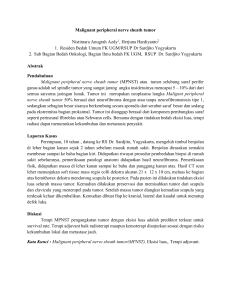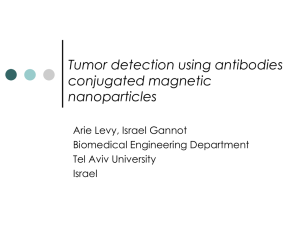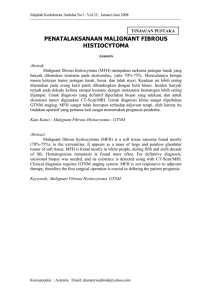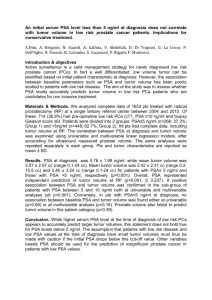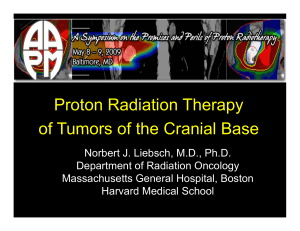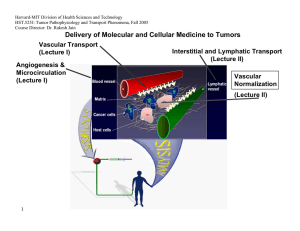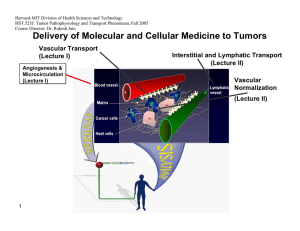Lateral view (anterior to the left) of a transgenic larva... B C transgenic juvenile showing EGFP expression in radial glial cells of...
advertisement
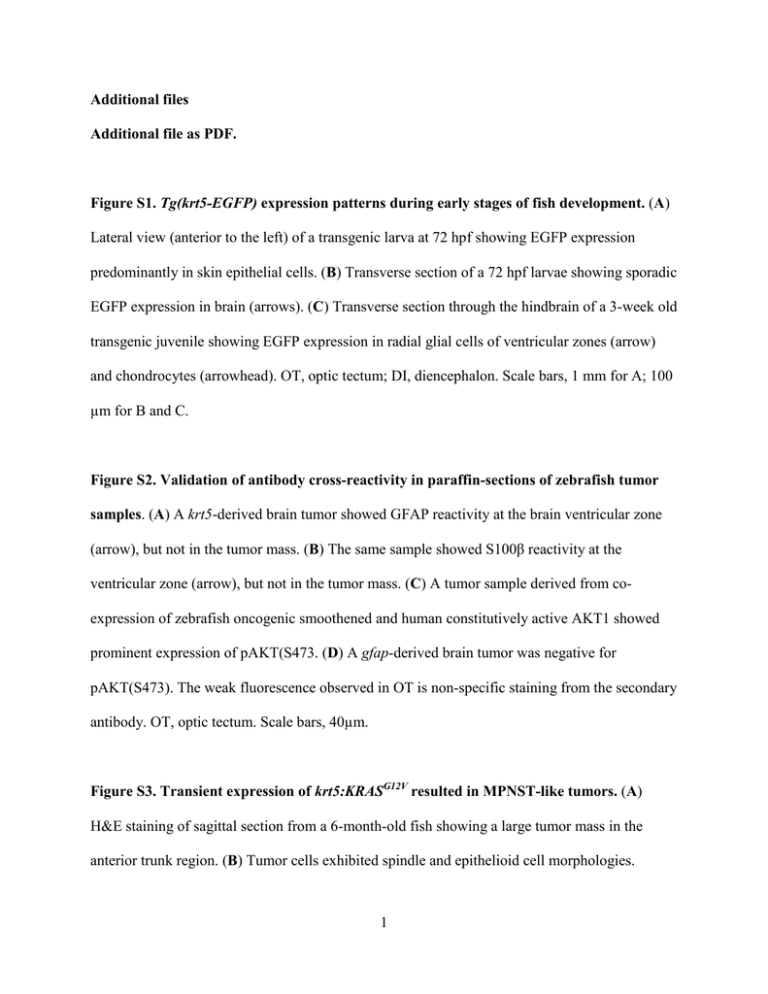
Additional files Additional file as PDF. Figure S1. Tg(krt5-EGFP) expression patterns during early stages of fish development. (A) Lateral view (anterior to the left) of a transgenic larva at 72 hpf showing EGFP expression predominantly in skin epithelial cells. (B) Transverse section of a 72 hpf larvae showing sporadic EGFP expression in brain (arrows). (C) Transverse section through the hindbrain of a 3-week old transgenic juvenile showing EGFP expression in radial glial cells of ventricular zones (arrow) and chondrocytes (arrowhead). OT, optic tectum; DI, diencephalon. Scale bars, 1 mm for A; 100 µm for B and C. Figure S2. Validation of antibody cross-reactivity in paraffin-sections of zebrafish tumor samples. (A) A krt5-derived brain tumor showed GFAP reactivity at the brain ventricular zone (arrow), but not in the tumor mass. (B) The same sample showed S100β reactivity at the ventricular zone (arrow), but not in the tumor mass. (C) A tumor sample derived from coexpression of zebrafish oncogenic smoothened and human constitutively active AKT1 showed prominent expression of pAKT(S473. (D) A gfap-derived brain tumor was negative for pAKT(S473). The weak fluorescence observed in OT is non-specific staining from the secondary antibody. OT, optic tectum. Scale bars, 40µm. Figure S3. Transient expression of krt5:KRASG12V resulted in MPNST-like tumors. (A) H&E staining of sagittal section from a 6-month-old fish showing a large tumor mass in the anterior trunk region. (B) Tumor cells exhibited spindle and epithelioid cell morphologies. 1 Mitotic figures were prevalent within the tumor mass (arrows). (C) A8-month-old fish with tumor cells obliterating the ventral brain and invading the gills. (D) Enlarged view of tumor cells in (C) showing spindle and epithelioid cells and a mitotic figure (arrow). Scale bars, 200 µm for A, C; 20 µm for B, D. Figure S4. Transient expression of gfap:KRASG12V resulted in undifferentiated neoplasms. (A) H&E staining of sagittal section from a 12-month old fish showing a large tumor mass in the anterior trunk region. (B) Tumor cells exhibited spindle and epithelioid cell morphologies. (C) A 4-month-old fish with tumor cells infiltrating the lower jaw. (D) Enlarged view of (C) showing compact and round tumor cells. Scale bars, 200µm for A, C; 20 µm for B, D. Figure S5. Inhibition of oncogenic KRAS expression in stable transgenic fish. (A, B) Tg(Krt5:rtTA:mCherryKRASG12V) transgenic larvae showed skin hyperplasia at 48hpf (arrows) which could be eliminated by 50µM U0126 applied at early gastrula stage. (C, D) In a Tg(gfap:rtTA:mCherryKRASG12V) stable line, 100µM U0126 treatment could significantly reduce oncogenic KRAS expression in CNS at 48hpf, but caused severe developmental defects. 2 A B OT DI C Figure S1 3 A B Tumor Brain Brain Tumor GFAP S100β C D OT Figure S2 Tumor pAKT(S473) pAKT(S473) Figure S2 4 B A tumor brain C D brain tumor gill Figure S3 5 A B brain tumor C D brain tumor Figure S4 6 gfap krt5 A C 10µg/ml Dox 10µg/ml Dox+50µM U126 2µg/ml Dox 2µg/ml Dox+100µM U0126 B D Figure S5 7
